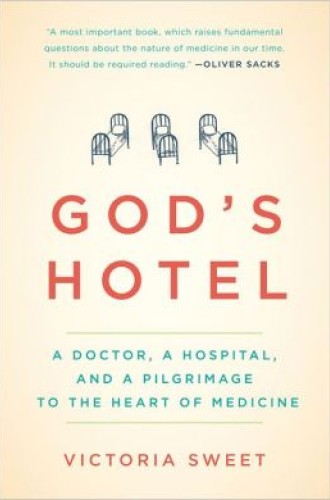God’s Hotel, by Victoria Sweet
Laguna Honda sounds like a car, but it’s a hospital. It’s an almshouse in San Francisco, a place of refuge for several thousand people. It’s the last such institution in America: not an homage to high-tech mechanized medicine, like every other hospital in the country, but more of a garden in which waifs and strays who can’t go home because they have no home to go to, who can’t be cared for in the community because they have no community, can instead be regenerated. It’s a kind of New Orleans Superdome without the drama and urgency and horror but with the same slow-burning, mirror-to-the-nation pathos.
This unusual setting, an inheritor of the Hôtel-Dieu, in which the poor were cared for in medieval Europe, becomes in this absorbing book the stage for a fourfold pilgrimage. The volume is a study in patience with patients: author Victoria Sweet carefully explains the details of a series of memorable people who taught her and trained her as they opened her eyes and her soul to the nature of healing. It is a study in the hospitality of a hospital: every chapter tells of an ongoing (and often comic) battle between administrators, with their new schemes for counting, measuring, improving and evaluating, and the doctors, nurses and patients who continue to elude and evade the constraints of the bureaucrats while discovering what health is really about.
It is a study in the nature of medicine itself: unlike a book such as Ann Patchett’s State of Wonder, which appears to be a critique of American medicine but remains too much in thrall to its subject, God’s Hotel is not taken in by the sophistication of the awesome American medico-educational complex; instead it disarmingly offers imagination, practice and a complementary ethos.






